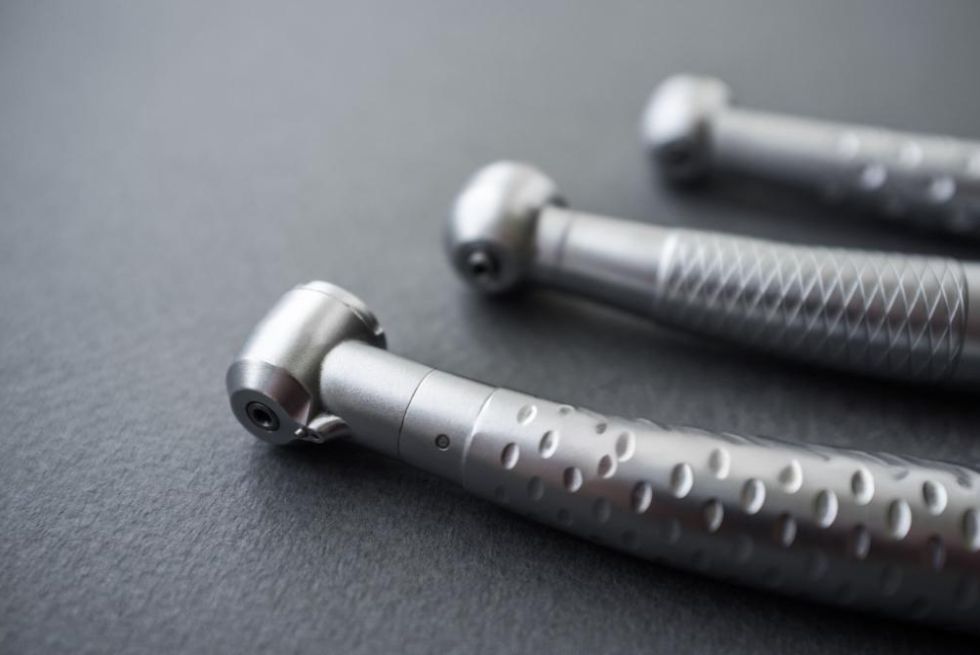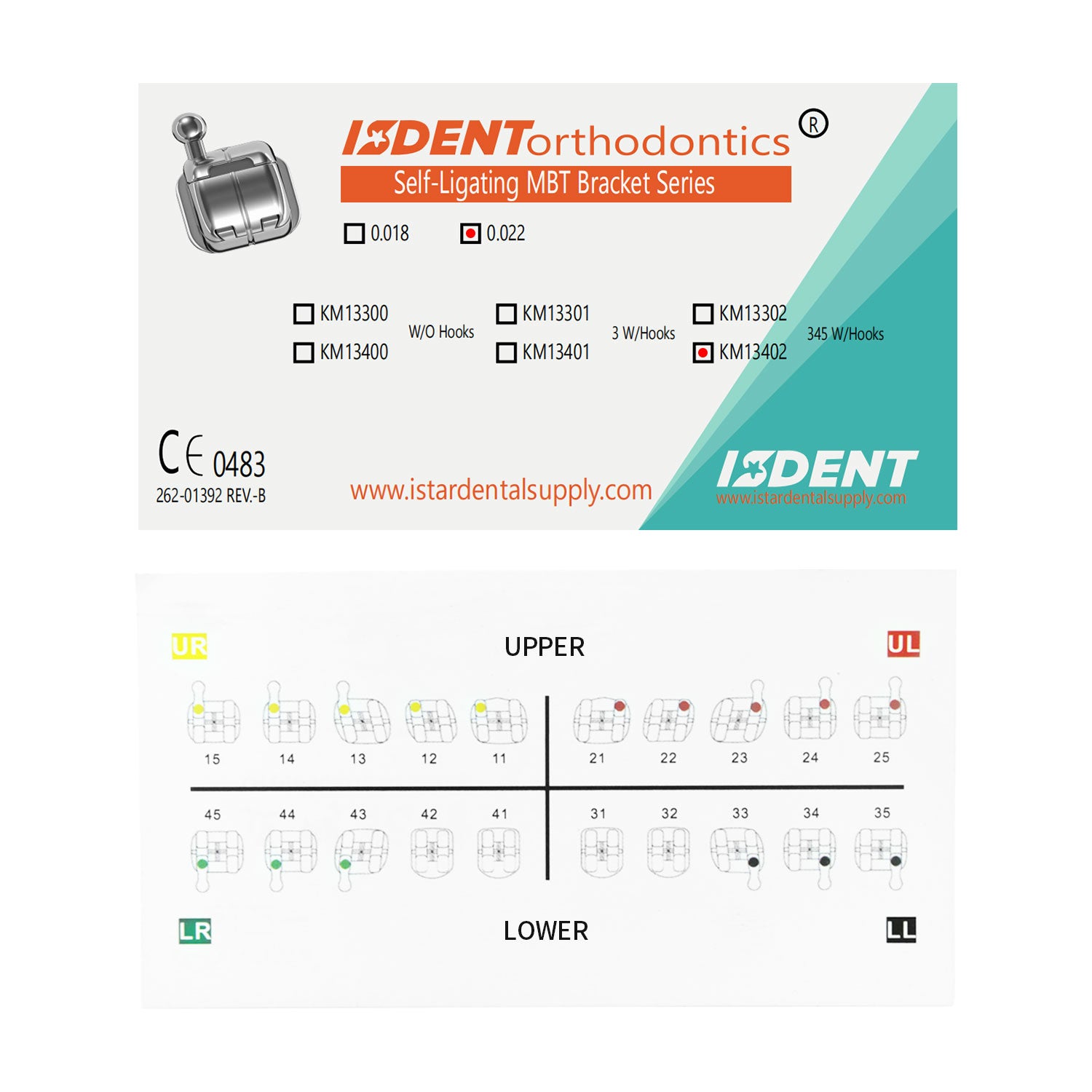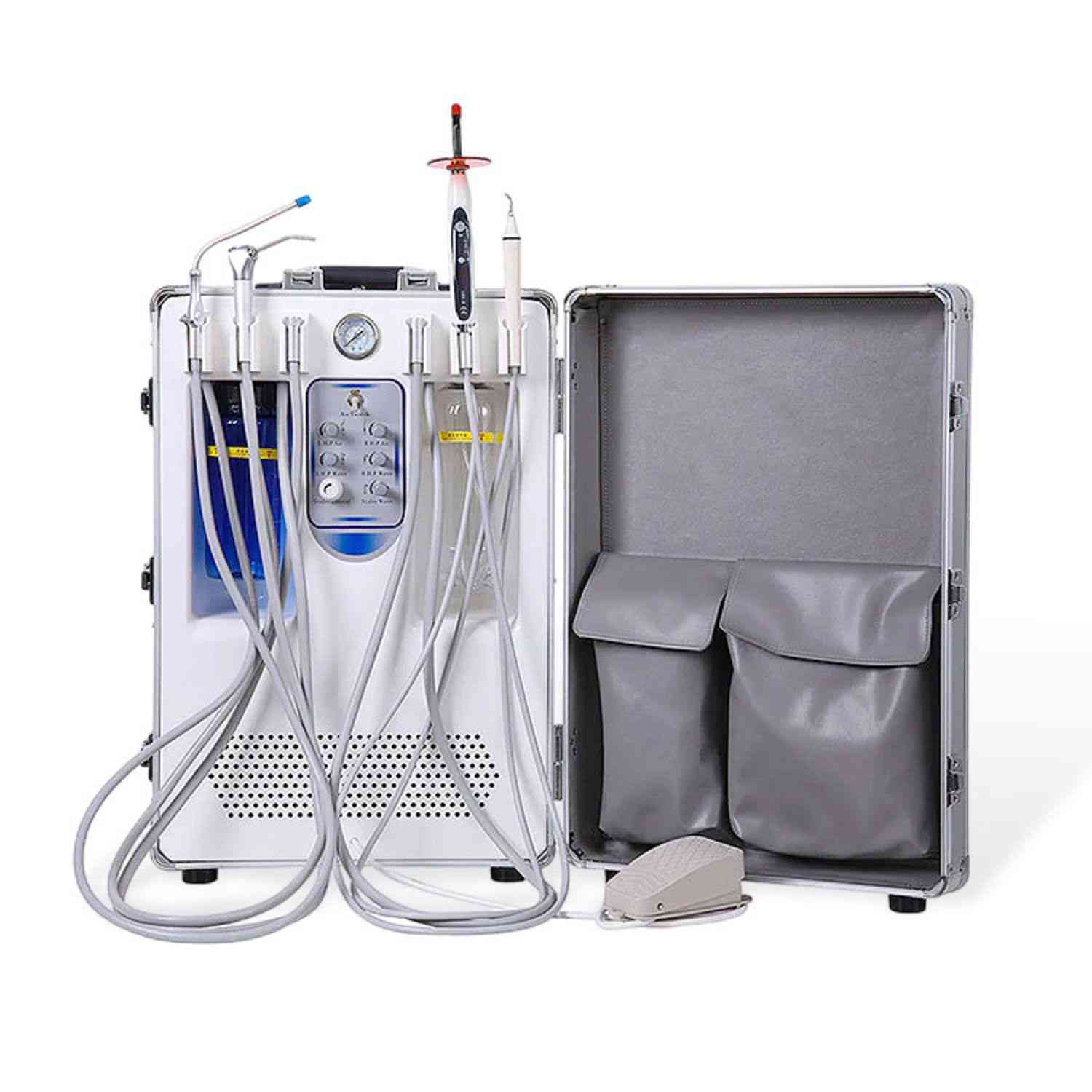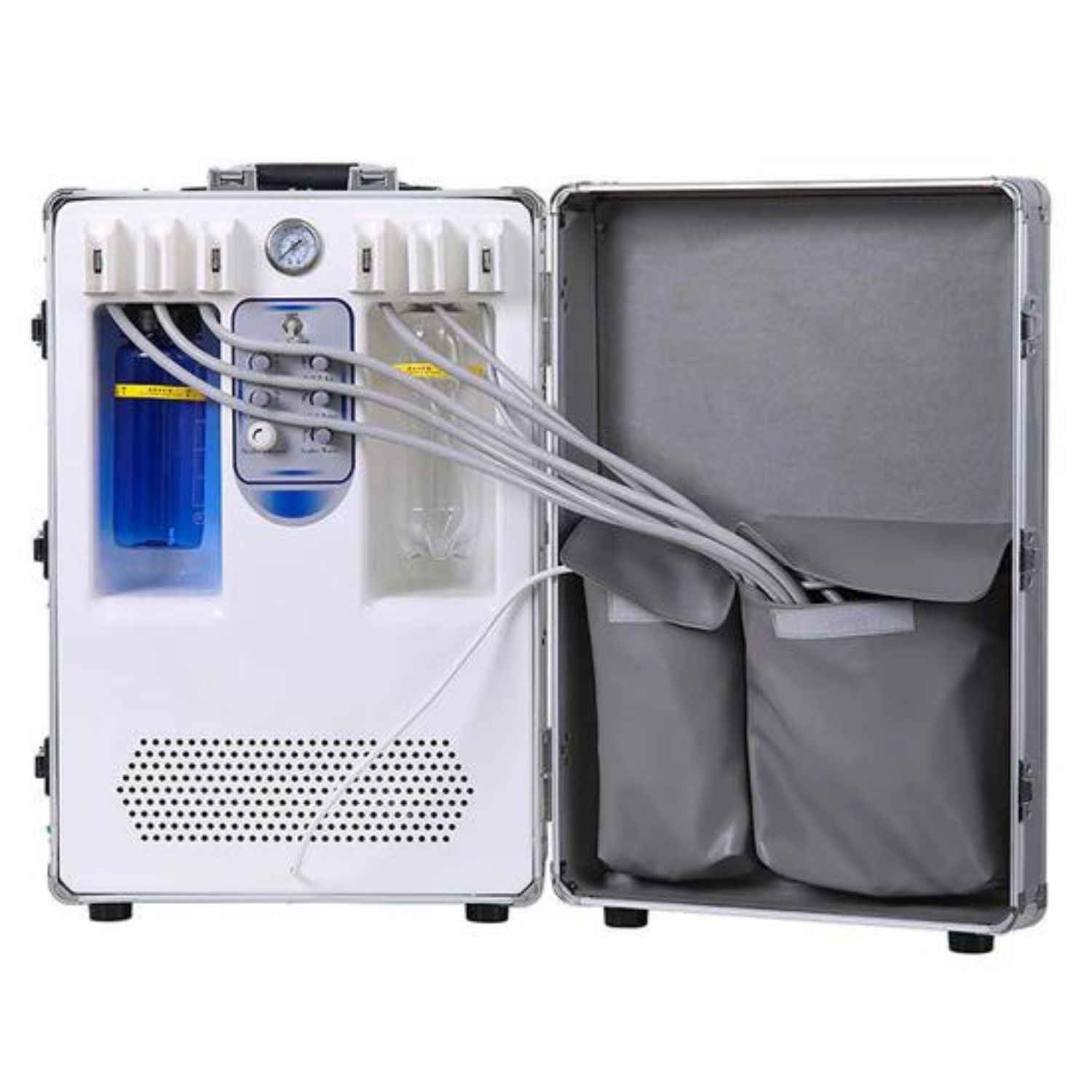A Comprehensive Guide to Dental Handpieces: Know the Different Types of Dental Handpieces for Your Dental Practice
When it comes to dental practice success, dental handpieces are an essential tool that no modern provider can do without. In this comprehensive piece, we delve deeply into the world of handpieces, showcasing their significance, exploring the common types of dental handpieces, and equipping you with practical knowledge on choosing any dental handpiece that fits your clinic’s needs. This article is definitely worth your time: By understanding the ins and outs of handpiece technology, you can improve efficiency, elevate patient care, and confidently make well-informed decisions when it comes to picking the right dental drill for various dental procedures.
Below is a structured outline of the 10 primary sections in this guide to dental handpieces:
Towards the end of this article, you will find a summary of the most critical points to remember. Let’s explore these topics in depth!

1. Different Types of Handpieces and Attachments
When it comes to dental handpieces types, one important aspect is figuring out the different types of dental handpieces your clinic needs for various tasks. You might see them referred to by brand, technology (e.g., electric handpieces), or overall design. Here’s a quick breakdown:
- High-speed air-driven handpieces: Typically operate at 200,000 to over 400,000 rpm.
- Electric motor handpieces: Also can be called electric dental handpiece system or “micromotors,” typically operate from 20,000 to 200,000 rpm.
- Low-speed handpieces (sometimes known as slow-speed handpieces): Often used for finishing, polishing, or prophylaxis.
Another key point is the attachment used with your handpiece. Some handpieces are designed specifically to accommodate a range of heads, angles, or couplings. For instance, a low-speed handpiece may use a straight handpiece or a contra-angle attachment for better access in tighter areas. Meanwhile, a specialized polish attachment can hold a dental bur and prophy cup for prophylaxis appointments.
“If you want to truly cater to the full spectrum of dental procedures, you need to know the different attachments, as some specialized handpieces are made for unique tasks.”
Effectively integrating the different types of drills in your clinic will help you address everything from finishing a filling to shaping an implant site.
2. Air-Driven vs. Electric Handpiece Systems: Which Should You Choose?
Modern handpiece system are primarily divided into two categories: air-driven dental and electric dental. They are usually air-driven or electric in their energy source.
-
Air-driven handpieces
- Lightweight compared to electric
- Simpler internal components
- The handpiece weight is particularly less
- Tend to be noisier and experience slight power drop under heavy load
-
Electric handpiece systems
- Use an electric motor for consistent torque
- Permit broad speed ranges
- Better cutting precision and quieter operation
- The best dental handpiece for detailed control, though heavier in the hand
Deciding between an air-driven handpiece and an electric handpiece often depends on what kind of dental procedures you offer. If you do more complex surgeries or rely on consistent torque, electric handpiece systems are compelling. But for simpler tasks and less weight, air-driven handpieces can do the trick. Regardless of your preference, top-quality handpiece systems are powerful contra-angle assemblies that help you achieve more predictable treatment outcomes.

3. High-Speed Handpieces and Low-Speed Handpieces: Key Differences
Dentists encounter both high-speed handpieces and low speed handpieces daily. Understanding the distinctions between these two is essential if you want to explore handpiece types in full.
High-speed air-driven handpieces:
- These are sometimes called dental high-speed handpieces or “HS handpieces.”
- They can create speeds of 250,000 rpm and higher.
- Ideal for cutting through enamel, adjusting crowns, or preparing tooth structure quickly.
- Often incorporate small head size for better intraoral visibility.
Low-speed dental handpiece:
- Typically runs up to 40,000 rpm.
- Works best for finishing and polishing, removing carious dentin, or adjusting prostheses.
- The low-speed handpiece is typically used for prophylaxis, finishing restorations, or lab work.
Knowing which handpiece will be used for each step in your treatment protocol is one of the fundamentals, as high-speed is about swift cutting, while low-speed focuses more on finishing and polishing. In other words, each of these types of dental handpieces plays a distinct role in a robust clinical workflow.

4. Surgical Handpieces and Endodontic Handpieces: Specialized Tools for Complex Procedures?
When dealing with more specialized procedures, you can’t rely solely on basic high- or low-speed devices. That’s where surgical handpieces and endodontic handpieces come in, each offering unique specifications:
-
Surgical handpieces
- Specifically designed for tasks like bone cutting, sectioning teeth, or placing implants.
- Often referred to as implant handpieces, capable of slower speeds and high torque.
- Enhanced sterilization features due to surgical requirements.
-
Endodontic handpieces
- Built for root canal treatments.
- Usually incorporate torque control and continuous rotation or reciprocation to handle endodontic files.
- Minimize file separation and provide consistent file speed for improved cleaning and shaping.
Each type of dental handpiece can address a distinct part of your practice. For instance, a specialized implants handpiece reduces the risk of complications during implant placement, while an endodontic model streamlines root canal therapy. These specialized handpieces are a must for clinics offering advanced surgical or endodontic services.
5. How Handpieces Work and Why Handpiece Repair Matters
If you’ve ever wondered how handpieces work, here’s a simple explanation:
- Compressed air or an electric motor inside the handpiece spins the dental bur at high or low speeds.
- The head of the handpiece includes bearings and turbines (in an air-driven model) or gear systems in an electric design.
- Rotational power is transferred to the dental bur for efficient cavity preparation, finishing, or drilling tasks.
Over time, wear and tear is inevitable. That’s why handpiece repair is so critical. Even well-maintained handpieces can degrade in speed or torque, or develop internal leaks. Minor mechanical failures can slow you down or undermine patient comfort. Regular upkeep and timely repairs keep your handpiece market investments functioning optimally—preventing friction from rising in erroneous ways and ensuring your clinic remains a top-rated service provider.

6. Factors to Consider When Selecting Handpiece Types
Choosing any dental handpiece can feel overwhelming, but focusing on a few core criteria narrows the field:
-
Type of Dental Application
- What is your typical patient’s need?
- High-speed for cutting, low-speed for finishing, or specialized ones for implants and endodontics?
- If you do a lot of implantology, consider dedicated implant handpieces.
-
Handpiece Weight & Ergonomics
- A comfortable instrument prevents fatigue and repetitive stress.
- The lighter air-driven handpiece might be easier for prolonged use.
-
Head Size
- Smaller heads offer better oral visibility.
- Larger heads may deliver more torque but can obscure your view.
-
Individual Handpiece Components
- Check if the device uses disposable or autoclavable parts.
- Evaluate coupler compatibility with your dental unit.
-
Handpieces That Give You Unmatched Performance
- Seek a brand with proven reliability, reputable support, and consistent torque.
- Remember, dental handpieces are an investment; a cheaper brand might cost more in repairs over time.
By weighing these aspects, you’ll get closer to finding the right dental handpiece that matches your clinical style and improves patient outcomes.
7. Guide to Dental Handpiece Maintenance and Longevity
Proper servicing not only saves money in the long run, but also ensures your handpieces are designed to last significantly longer. Here is a succinct guide to dental handpiece maintenance:
-
Daily Cleaning Routines:
- Always follow the manufacturer’s guidelines.
- Use oil or lubricant recommended for your device.
- Flush out debris and sterilize after each use.
-
Sterilization Protocol:
- High-speed devices, low-speed handpieces, and other components must be autoclaved if indicated.
- Avoid submerging motor components in chemical baths if not recommended.
-
Routine Checks:
- Inspect gaskets, O-rings, or bearings regularly.
- Assess for unusual noises or vibrations.
-
Professional Servicing:
- Schedule periodic checkups with authorized technicians.
- Proactive repairs or part replacements minimize downtime.
Maintaining protected, clean handpieces used in every appointment is integral to the success of your dental practice. Take the time to do it right, and your devices will repay you with years of reliable service.

8. ISTAR Dental Supply: Supply Your Practice with Handpieces That Give You Unmatched Quality
At ISTAR Dental Supply, we understand that dental handpieces are used countless times each day, so dental handpieces are an essential fixture in any modern clinic. We take immense pride in manufacturing high-quality solutions for all dental professionals, including dentist, dental lab, dental hospital, and dental school customers.
Why Choose ISTAR Dental Supply?
- Expert Manufacturing: As a manufacturing plant, we harness advanced engineering processes to produce top-notch dental equipment and ensure every dental handpiece meets rigorous quality standards.
- Broad Portfolio: From air-driven handpieces to electric handpiece designs, our collection spans the common types of dental handpieces you need for daily practice.
- Reliable Support: Our reputable service team is there to assist with handpiece repair or answer technical queries.
“With ISTAR Dental Supply, you can be sure that your handpiece will be required less frequently for unscheduled servicing due to superior build quality.”
We strive to keep you on the cutting edge of dentistry. If you’re looking for low speed handpieces, high-tech electric handpiece systems, or robust surgical handpiece solutions, we’ve got you covered.
Example Chart: Basic Comparison of ISTAR Dental Supply Handpieces
| Handpiece Type | Speed Range | Primary Application | Notable Feature |
|---|---|---|---|
| High-Speed Air-Driven | 200k–400k+ rpm | Cutting tooth structure | Lightweight & aerodynamic |
| Low-Speed Handpiece | Up to ~40k rpm | Polishing & finishing | Interchangeable attachments |
| Electric Dental Handpiece | 20k–200k rpm | Precision cutting & endodontic | Consistent, stable torque |
| Surgical/Implant Handpiece | 15k–40k rpm | Bone cutting & implant sites | Sterilizable & torque control |
For more information or to supply your practice with handpieces built on the foundation of innovation and reliability, explore our curated collections:
- Dental Equipment
- Dental Handpiece
- High Speed Handpiece
- Low Speed Handpiece
- Electric Handpiece Dental
- Surgical Handpiece
We want to help you practice with handpieces that give reliable performance so you can focus on what matters most: delivering excellent patient care.
9. FAQs
Where should I begin if I’m new to handpieces?
If you’re a beginner, start with identifying your practice needs. For general restorative work, a high-speed dental handpiece plus a low-speed dental handpiece is typically sufficient. You can later expand to specialized models like endodontic handpieces or implant handpieces depending on the diversity of treatments you offer.
Is it necessary to invest in electric motor handpieces right away?
It depends on the volume and complexity of procedures. Electric motor handpieces offer consistent torque and can handle diverse tasks well, but air-driven handpieces remain popular due to lighter weight and lower initial cost. Evaluate your budget and procedural requirements before deciding.
Why is root canal therapy more effective with dedicated endodontic handpieces?
Endodontic handpieces provide the precise torque control and specialized file attachments crucial for successful root canal therapy. They are more accurate, reduce the risk of file breakage, and enhance efficiency compared to multi-purpose high-speed or low-speed devices.
Are there any universal guidelines for maintaining a handpiece?
Yes! Always refer to the guide to dental handpiece maintenance provided by the manufacturer. In general, cleaning, lubricating, and sterilizing after every use are key steps. Additionally, keep an eye on performance issues like unusual noises or decreased torque—this might indicate you need professional servicing soon.
What makes a type of dental handpiece ‘best’?
The best dental handpiece often depends on the specific practice and personal preference. Factors include ergonomic design, consistent torque, minimal vibration, cost, brand reputation, and your typical procedure load.
How do I address head size concerns if I have limited access in the posterior region?
Look for high-speed or electric models featuring a smaller head size. Many manufacturers also produce mini-head or compact designs specifically for posterior access or pediatric cases.
Bullet Point Summary
- Dental handpieces are an essential tool in modern dentistry and come in multiple styles.
- Different types of dental handpieces include high-speed, low-speed, implant handpieces, and endodontic handpieces.
- They are usually air-driven or electric, both having unique pros and cons.
- Proper maintenance (cleaning, lubrication, and sterilization) ensures maintained handpieces and longevity.
- Choosing any dental handpiece depends on your procedural complexity, budget, and ergonomic preferences.
- Handpieces are an essential part of routine practice, from prophylaxis to advanced dental procedures.
- ISTAR Dental Supply offers a robust range of solutions to help you find the right dental handpiece for your needs.
If you’re seeking dental handpieces or exploring advanced handpiece systems, reach out to ISTAR Dental Supply today and empower your practice with the latest technology. Feel free to share your own experiences or questions, and let us know how we can help your team achieve the utmost in quality patient care!







